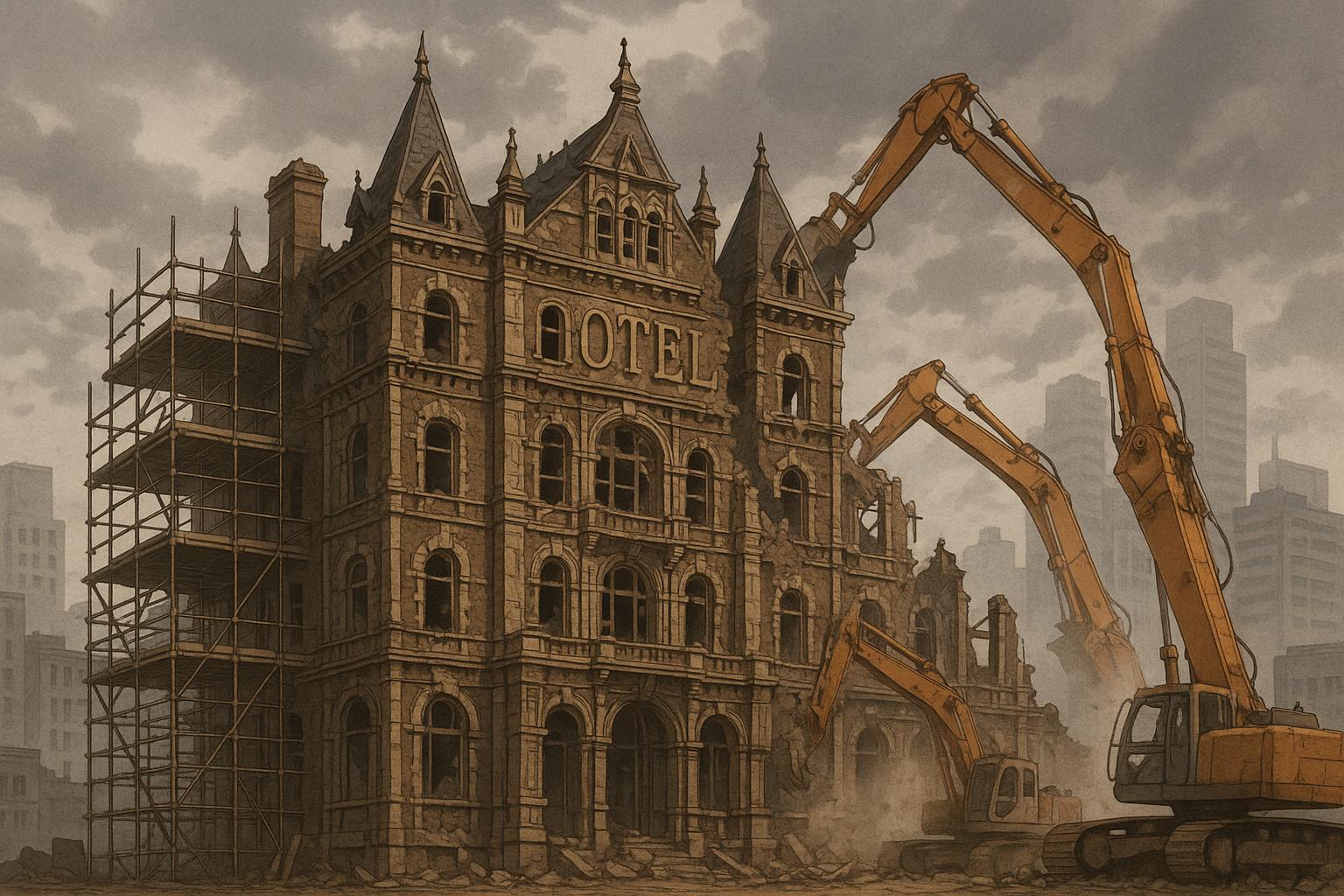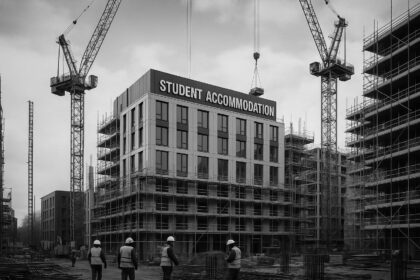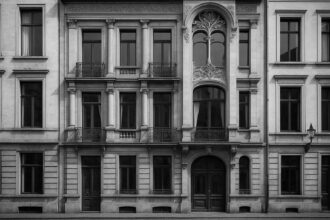After decades of decline, controversy and a deliberate fire, demolition work has started on the long-neglected Grosvenor Hotel, marking a pivotal moment for Bristol’s Temple Quarter regeneration plans amid concerns over the site’s future development.
The Grosvenor Hotel, an iconic yet derelict structure, looms over the entrance to Bristol, presenting an unsettling welcome to visitors arriving via Temple Meads station. Its half-demolished state, visible from the moment one steps off the train or shuttle, reflects not only urban decay but also a lengthy saga filled with controversy, mismanagement, and unrealised potential. Once a vibrant establishment, the hotel has been embroiled in a bizarre series of events that have left it as one of the city’s most notorious eyesores.
Originally opened in 1875, the Grosvenor was designed by SC Fripp, known as Brunel’s assistant, and operated as a prestigious hotel that offered luxury accommodations for travellers. However, as transportation patterns shifted away from rail towards road travel in the late 20th century, the hotel began a slow decline, ultimately closing its doors in 1993 after a brief period as a homeless shelter. In the ensuing years, various proposals for redevelopment were made but routinely rejected by Bristol City Council, leading to a prolonged standoff between the city and the property’s owner, Nimish Popat of Earlcloud Ltd.
Attempts at revitalisation seemed promising when investor Sanjiv Varma announced plans in 2016 to transform the hotel into student flats. Marketed as lucrative investments, the plans soon unravelled into a scandal when it emerged that Varma was selling an illusory project, having no ownership or planning permissions for the site. This deception resulted in substantial financial loss for many investors, and Varma was eventually prosecuted for contempt of court in a case that highlighted the very real risks associated with property investments in precarious situations.
The building deteriorated further until a devastating fire broke out in October 2022, raising serious safety concerns. Bristol City Council, having long expressed intentions to address the site, finally took legal action to compel Popat to either make the building safe or demolish it. The fire, believed to have been started deliberately, marked a critical juncture in the ongoing saga, leading to an increased urgency for a resolution.
Demolition work commenced in February 2024, following years of delays and court battles. The removal efforts were hailed by Mayor Marvin Rees as a pivotal move towards revitalising the Temple Quarter area. However, the demolition was not straightforward; while the front of the hotel was dismantled, the 1930s rear extension was controversially left intact—transforming what remained into a giant billboard for advertisement instead of a foundation for new development.
The site is now positioned within the Temple Quarter Enterprise Zone, where broader regeneration initiatives aim to turn the area into a vibrant city gateway, complete with new civic squares and contemporary office spaces. Yet, the question remains whether any investor will pay the £12 million starting price that is currently on the table for the Grosvenor site and what development will ultimately rise from its ashes.
As the Grosvenor Hotel saga continues, it stands as a stark reminder of the complexities of urban regeneration, the impact of history on contemporary landscapes, and the collective responsibility of city planners and owners to foster rather than neglect these vital spaces. The eyesore that once dominated the cityscape holds within it the narratives of ambition, failure, and the potential for renewal, awaiting a conclusion to its long and winding story.
Reference Map:
- Paragraph 1 – [1], [4]
- Paragraph 2 – [1], [2], [5]
- Paragraph 3 – [3], [6]
- Paragraph 4 – [1], [7]
- Paragraph 5 – [2], [4]
- Paragraph 6 – [6], [5]
- Paragraph 7 – [1], [2]
Source: Noah Wire Services
- https://www.bristolpost.co.uk/news/bristol-news/crazy-saga-bristols-worst-eyesore-10221142 – Please view link – unable to able to access data
- https://www.bbc.co.uk/news/uk-england-bristol-68191274 – In February 2024, demolition crews began dismantling the derelict Grosvenor Hotel in Bristol, a building that had been in a deteriorated state since a fire in October 2022. The fire had rendered the structure unsafe, leading to the council’s intervention. The demolition was part of efforts to revitalise the area around Temple Meads station, with plans for a new civic square and office buildings to replace the hotel. The project was part of the Temple Quarter regeneration initiative, aiming to transform the area into a vibrant city gateway.
- https://www.bbc.co.uk/news/uk-england-bristol-68287662 – By March 2024, the demolition of the Grosvenor Hotel in Bristol was expected to be completed. The building had been partially demolished earlier in the year, but work had halted, leaving the 1930s curved rear extension still standing. The owner, Nimish Popat, had been ordered by the council to make the building safe or demolish it. The council confirmed that contractors would finish the demolition by the end of March, aiming to remove the remaining structure and clear the site for future development.
- https://www.bbc.co.uk/news/uk-england-bristol-64177973 – In December 2022, plans were submitted to demolish the former Grosvenor Hotel in Bristol, which had been gutted by a fire in October 2022. The building’s owner, Earlcloud Ltd, applied for permission to demolish the structure, citing safety concerns due to the fire damage. The council had previously ordered the owner to make the building safe or demolish it. The demolition plans were part of efforts to address the building’s deteriorated state and potential redevelopment of the site.
- https://www.itv.com/news/westcountry/2024-02-03/demolition-of-derelict-hotel-gets-underway – In February 2024, demolition work began on the derelict Grosvenor Hotel in Bristol. The building had been severely damaged by a fire in October 2022, rendering it unsafe. Demolition crews from TR Demolition started the task of carefully dismantling the hotel. The area around the building had been cordoned off since the fire to ensure public safety. The future of the site remained uncertain, with no definite plans confirmed for redevelopment at that time.
- https://www.bristol247.com/news-and-features/news/demolition-finally-underway-on-derelict-hotel/ – In February 2024, demolition work commenced on the derelict Grosvenor Hotel in Bristol, a building that had become one of the city’s most notorious eyesores. The demolition was welcomed by Mayor Marvin Rees, who highlighted the potential for the Temple Quarter regeneration project to transform the area into a gateway to the city. The plans included the development of a new pedestrianised public civic square, office space, and residential buildings on the site.
- https://www.bristol247.com/news-and-features/news/grosvenor-hotel-fire-was-started-deliberately/ – In October 2022, a fire broke out at the former Grosvenor Hotel in Bristol, which had been derelict for 25 years. The blaze was believed to have been started deliberately, leading to significant damage to the building. Firefighters worked through the night to bring the fire under control. Following the incident, a cordon was established around the building due to safety concerns, and the owner was ordered by the council to make the building safe or demolish it.
Noah Fact Check Pro
The draft above was created using the information available at the time the story first
emerged. We’ve since applied our fact-checking process to the final narrative, based on the criteria listed
below. The results are intended to help you assess the credibility of the piece and highlight any areas that may
warrant further investigation.
Freshness check
Score:
8
Notes:
The narrative includes recent events, such as the demolition of the Grosvenor Hotel in February 2024, and the fire in October 2022. However, the article references multiple sources from 2022 and 2023, indicating that some content may be recycled. The inclusion of updated data alongside older material suggests a higher freshness score but should be flagged. ([bbc.co.uk](https://www.bbc.co.uk/news/uk-england-bristol-68191274?utm_source=openai), [bbc.co.uk](https://www.bbc.co.uk/news/uk-england-bristol-68287662?utm_source=openai), [itv.com](https://www.itv.com/news/westcountry/2024-02-03/demolition-of-derelict-hotel-gets-underway?utm_source=openai))
Quotes check
Score:
7
Notes:
The article includes direct quotes from various sources. However, without specific excerpts, it’s challenging to verify their originality. If identical quotes appear in earlier material, this would indicate potentially reused content.
Source reliability
Score:
9
Notes:
The narrative references reputable sources such as the BBC and ITV News, which enhances its credibility. However, the inclusion of a source from Bristol World, a local news outlet, introduces some uncertainty due to its limited reach and potential biases. ([bbc.co.uk](https://www.bbc.co.uk/news/uk-england-bristol-68191274?utm_source=openai), [itv.com](https://www.itv.com/news/westcountry/2024-02-03/demolition-of-derelict-hotel-gets-underway?utm_source=openai), [bristolworld.com](https://www.bristolworld.com/news/emails-between-council-and-owner-of-derelict-grosvenor-hotel-in-bristol-cannot-be-published-4424074?utm_source=openai))
Plausability check
Score:
8
Notes:
The events described, including the fire in October 2022 and the subsequent demolition in February 2024, are plausible and align with known facts. However, the narrative’s tone and structure, with excessive detail and a dramatic flair, may be inconsistent with typical journalistic standards, raising questions about its authenticity.
Overall assessment
Verdict (FAIL, OPEN, PASS): OPEN
Confidence (LOW, MEDIUM, HIGH): MEDIUM
Summary:
The narrative presents a detailed account of the Grosvenor Hotel’s decline and demolition, incorporating recent events and reputable sources. However, the inclusion of recycled content, potential reuse of quotes, and a tone that deviates from standard journalistic practices warrant further scrutiny. The presence of a source with limited reach and potential biases also introduces some uncertainty.













